A rating table/flow lookup table facilitates the determination of the flow rate (discharge) based on specific water surface elevations with a computational scheme specified under the Flow Control Type dropdown menu. This specification is useful for creating stepped flows in an Instream Flow Incremental Method (IFIM) habitat analysis. IFIM, a widely used tool, assesses the effects of flow manipulation on river habitats using Habitat Suitability Criteria (HSC) models, which quantify how well habitat conditions meet the needs of aquatic species at different life stages. The functionality of available Flow Control Type options was introduced and explained in the previous blog.
One of the flow control approaches is Flow derived from US Elev Whole Channel Rating Curve. When this method is selected, EEMS enables the establishment of a boundary using a single rating curve to represent river dynamics. This option functions like a flow table or time series, allowing flexible adjustments of flow multipliers across different cells (Figure 3). Moreover, users can designate a downstream cell for flow return within the Downstream Cell frame. If it is left blank, EEMS disregards the downstream end. Furthermore, specifications such as the Head Multiplier, Head Offset, and Flow Multiplier must be provided, as illustrated in Figure 1.
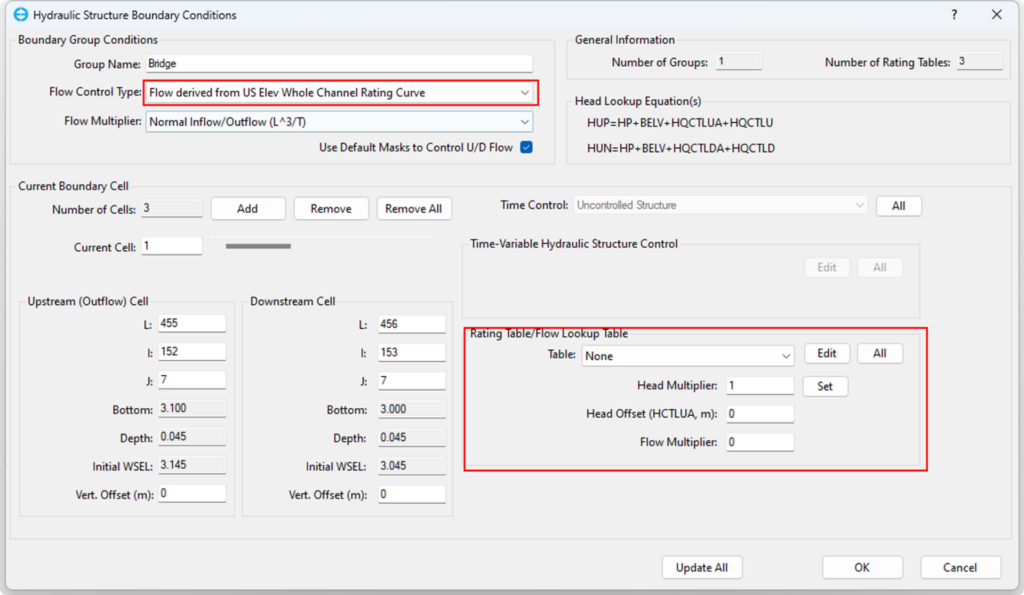
Another method for hydraulic structure boundary conditions is to derive flows from upstream depth, elevation difference, or from both upstream and downstream elevations. This approach relies on a head lookup table to establish the correlation between head and flow. For instance, when the option Flow derived from US and DS Elevation is selected, it is essential to have a table outlining this relationship, as demonstrated in Figures 2 and 3.
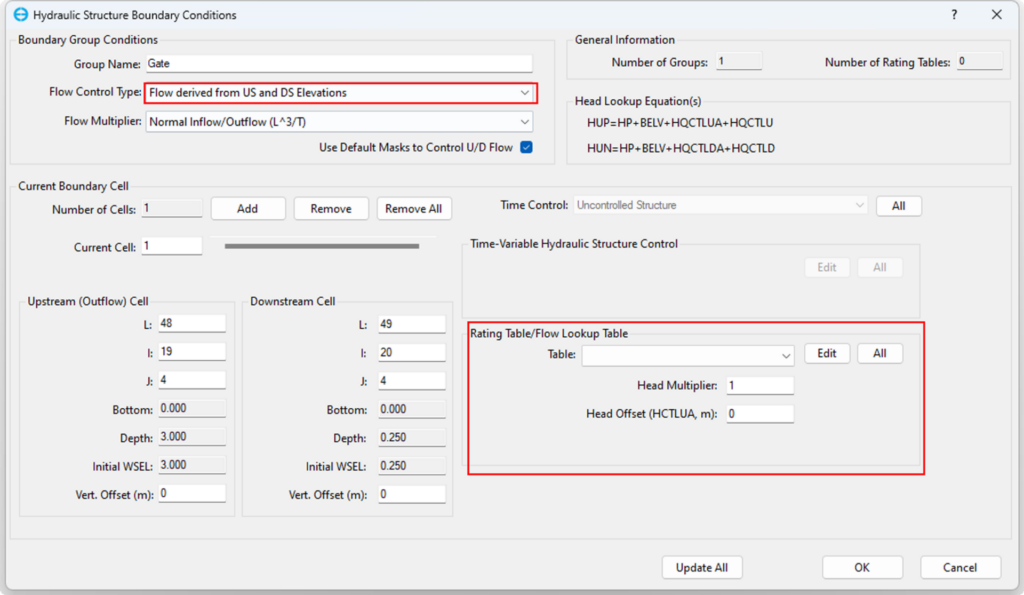
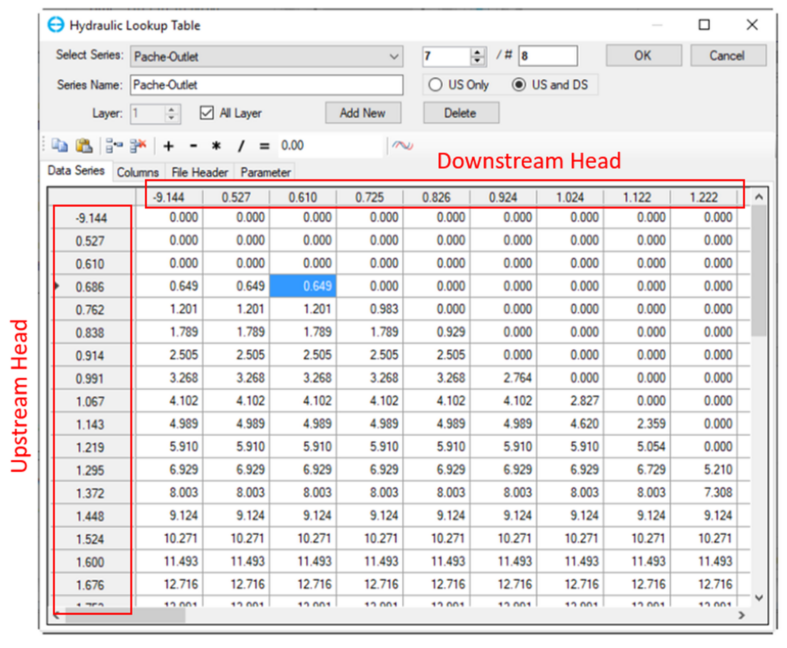
Meanwhile, if the Elevation Difference with Flow Acceleration option is chosen, a lookup table is required, and the flow acceleration parameter is squared and multiplied by an acceleration factor when water passes through an inlet, as shown in Figure 4.
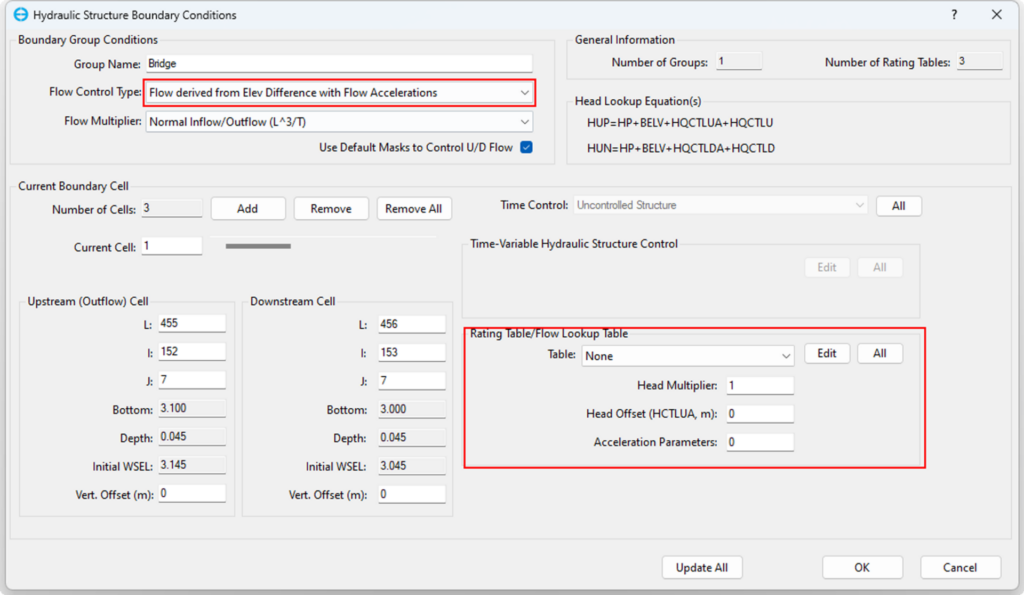
Finally, when the Flow derived from Upstream Depth or Elevation Difference with Low Chord is selected, hydraulic structures can simulate the bottom of a bridge (low chord). When water flows below the bridge deck, it can move in both upstream and downstream directions. However, once water overtops the bridge, it only flows downstream. EFDC+ calculates the total flow rate and requires the flow to be measured when the water reaches the low chord elevation. The excess elevation is then subtracted from the elevation computed by the rating curve, which defines the total flow around the bridge for all depths. Subtracting the actual flows helps prevent large inflow jumps, which may result in model instability. To avoid instability during this transition, users can set the Minimum Number of Time Steps Above the Low Chord. An example of this setup and the correlation between the water level in the head control structure and flow discharge are provided in Figures 5 and 6, respectively.
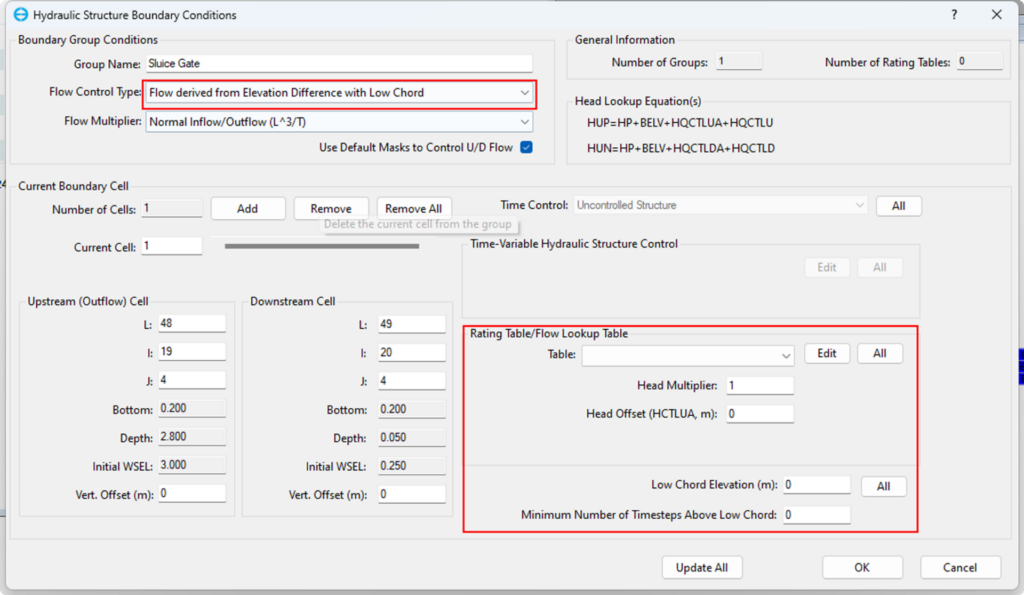
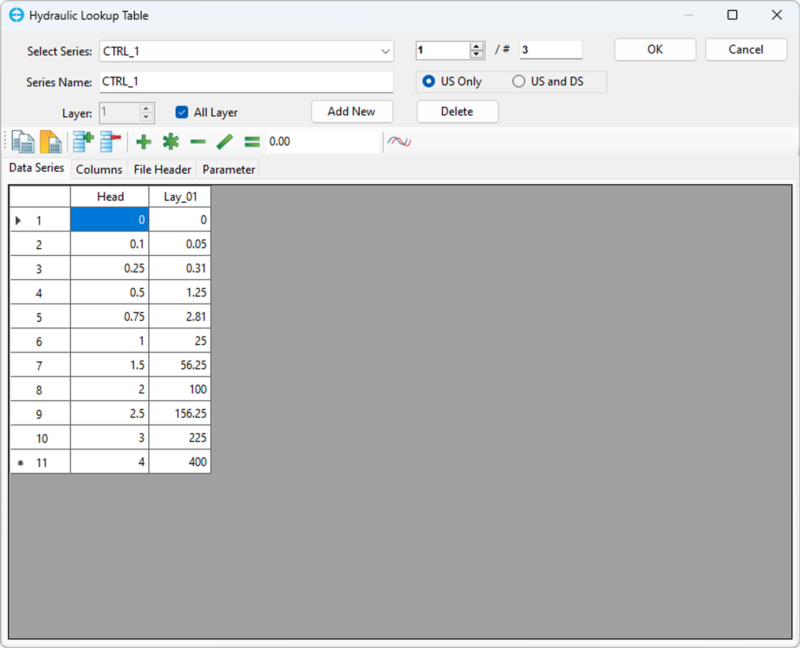
Conclusion
In conclusion, understanding the intricacies of rating table/flow lookup tables within EEMS is essential for accurately simulating flows around hydraulic structures and their impact on aquatic habitats. By leveraging these tools, users can determine precise flow rates based on varying water surface elevations, which is crucial for applications such as IFIM habitat analysis. The flexibility of EEMS to incorporate different boundary conditions and flow control types, such as using upstream and downstream elevations or elevation differences with flow acceleration, enhances its capability to model complex hydraulic scenarios. These features ensure that EEMS remains a robust and versatile tool for environmental engineers and hydrologists, facilitating detailed and accurate simulations vital for effective water resource management and habitat preservation.


